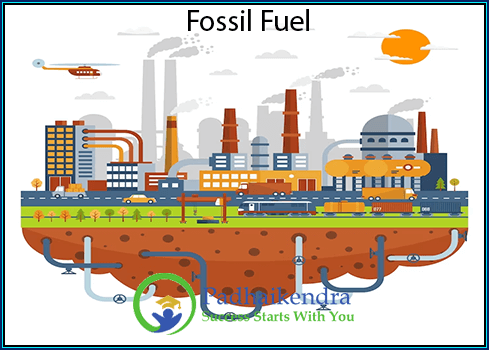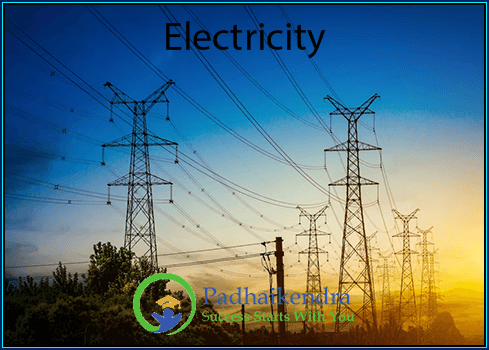Energy from fossil fuels refers to the energy obtained through the combustion or burning of fossil fuels, such as coal, oil, and natural gas. Fossil fuels have been formed over millions of years from the remains of ancient plants and organisms. They are considered non-renewable resources because their formation takes an extremely long time compared to the rate at which they are consumed.
When fossil fuels are burned, the chemical energy stored within them is released in the form of heat. This heat energy can then be converted into various useful forms, such as electricity, mechanical work, or heating.
Origin of the fossil fuels
 Fossil fuels are formed from the remains of living organisms that died millions of years ago. The organic matter of these organisms gets buried under layers of sediment and rock and, over time, is subjected to high pressure and temperature. This process, known as diagenesis, converts the organic matter into hydrocarbons, which are the main components of fossil fuels. The three main types of fossil fuels are coal, oil, and natural gas, and each has a different origin and formation process. Coal is formed from the remains of ancient forests and swamps, oil is formed from the remains of marine organisms, and natural gas is formed from the same process as oil, but at higher temperatures and pressures.
Fossil fuels are formed from the remains of living organisms that died millions of years ago. The organic matter of these organisms gets buried under layers of sediment and rock and, over time, is subjected to high pressure and temperature. This process, known as diagenesis, converts the organic matter into hydrocarbons, which are the main components of fossil fuels. The three main types of fossil fuels are coal, oil, and natural gas, and each has a different origin and formation process. Coal is formed from the remains of ancient forests and swamps, oil is formed from the remains of marine organisms, and natural gas is formed from the same process as oil, but at higher temperatures and pressures.
Steps to Harness Energy from Fossil Fuels
The process of harnessing energy from fossil fuels involves several steps:
Extraction: Fossil fuels are extracted from underground or undersea deposits through mining or drilling. This process can be complex and requires advanced techniques to reach and extract the fuel reserves.
Refining and Processing: Crude oil, for example, needs to undergo refining processes to separate it into different components like gasoline, diesel, and various other petroleum products. Natural gas may also undergo processing to remove impurities before it can be used.
Combustion: Fossil fuels are typically burned in power plants, industrial facilities, vehicles, and residential heating systems. During combustion, the fossil fuels react with oxygen, releasing heat energy. This heat is then used to generate steam, which drives turbines to produce electricity or power engines for transportation.
Power Generation and Conversion: In power plants, the heat energy produced from burning fossil fuels is used to heat water and produce high-pressure steam. The steam drives turbines, which are connected to generators to produce electricity.
Advantages of Fossil Fuels for Energy
High Energy Density: Fossil fuels have a high energy content, meaning they can produce significant amounts of energy from relatively small quantities.
Infrastructure: Fossil fuel infrastructure, such as power plants and distribution networks, is already well-established in many parts of the world, making it easier to utilize this form of energy.
Reliability: Fossil fuels provide a consistent and reliable source of energy, as they can be readily accessed and used when needed.
Challenges and Concerns
Environmental Impact: The combustion of fossil fuels releases greenhouse gases, such as carbon dioxide (CO2), contributing to climate change and air pollution.
Finite Resource: Fossil fuels are limited in supply and will eventually be depleted. As reserves decline, the cost and difficulty of extraction may increase.
Dependency and Geopolitics: Reliance on fossil fuels can lead to geopolitical tensions and economic vulnerability, as some regions have significant fossil fuel reserves while others are heavily dependent on imports.
Transition to Renewable Energy: Given the environmental concerns associated with fossil fuels, there is a growing global push to transition to renewable energy sources, such as solar, wind, and hydropower, to reduce greenhouse gas emissions and promote sustainable energy systems.
Energy derived from fossil fuels plays a significant role in meeting the world’s energy demands. However, the environmental impact, the finite nature of fossil fuel reserves, and the need for a transition to renewable energy sources highlight the importance of developing sustainable and cleaner energy alternatives for a greener future.





